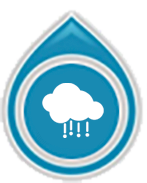Hail

Hailstorms occur across Canada, though they most frequently happen in Alberta, the southern Prairies, and southern Ontario.
- Hailstorms occur mostly from May to October.
- Hail is formed when updrafts in thunderclouds carry raindrops upward into extremely cold areas of the atmosphere, where they freeze and merge into lumps of ice.
- For farmers whose crops are crushed, and for others whose homes and cars are damaged, a hailstorm can be a financial disaster.
- Some hailstones are the size of peas while others can be as big as grapefruits.
What to do before
If hail is forecast, you may want to protect your vehicle by putting it in the garage, if possible.
What to do during
- Take cover when hail begins to fall. Do not go out to cover plants, cars, or garden furniture or to rescue animals. Hail comes down at great speed, especially when accompanied by high winds. Although no one in Canada has ever been killed by hail, people have been seriously injured by it.
- When a hailstorm hits, stay indoors, and keep yourself and your pets away from windows, glass doors, and skylights which can shatter if hit by hailstones. Avoid using the telephone during a storm, and do not touch metal objects like stoves, radiators, metal pipes, and sinks.
When a hailstorm hits, find shelter and avoid underpasses or any low-lying areas that may flood.

